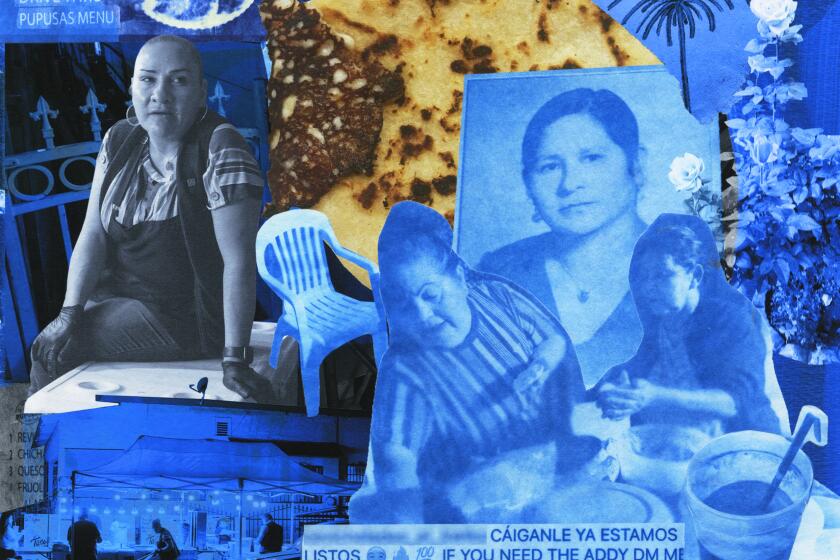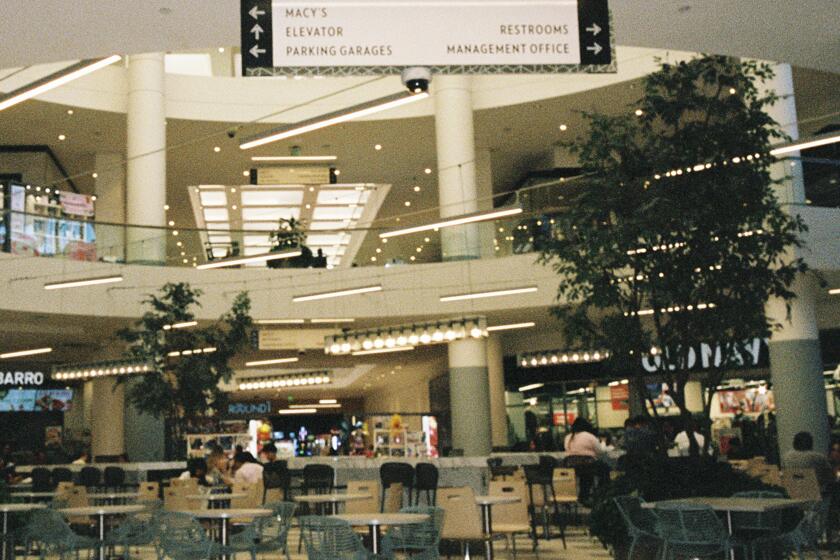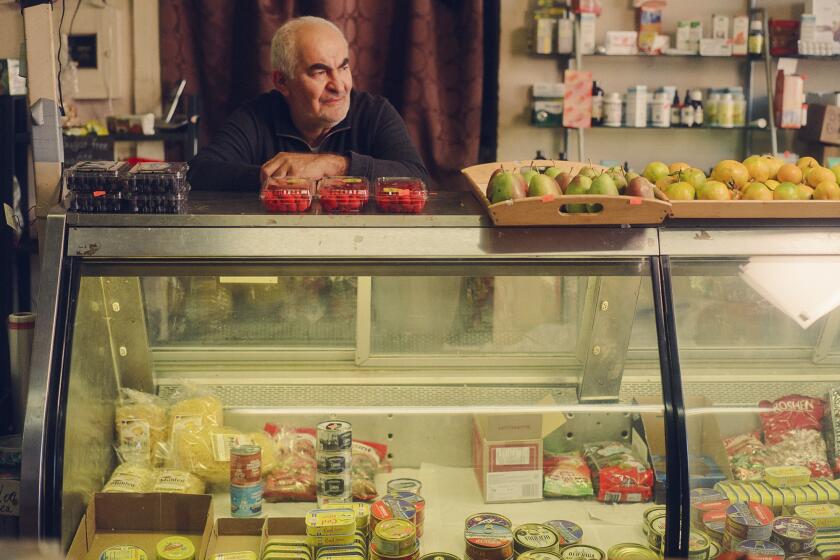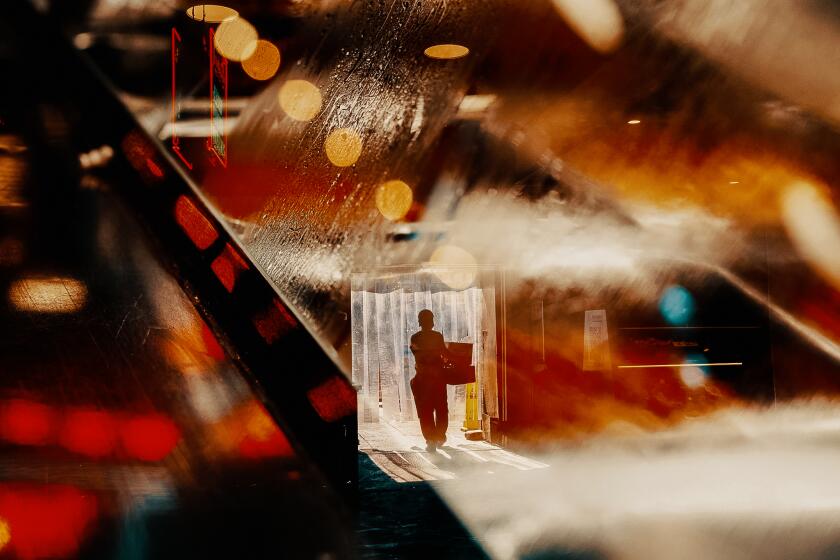- Share via
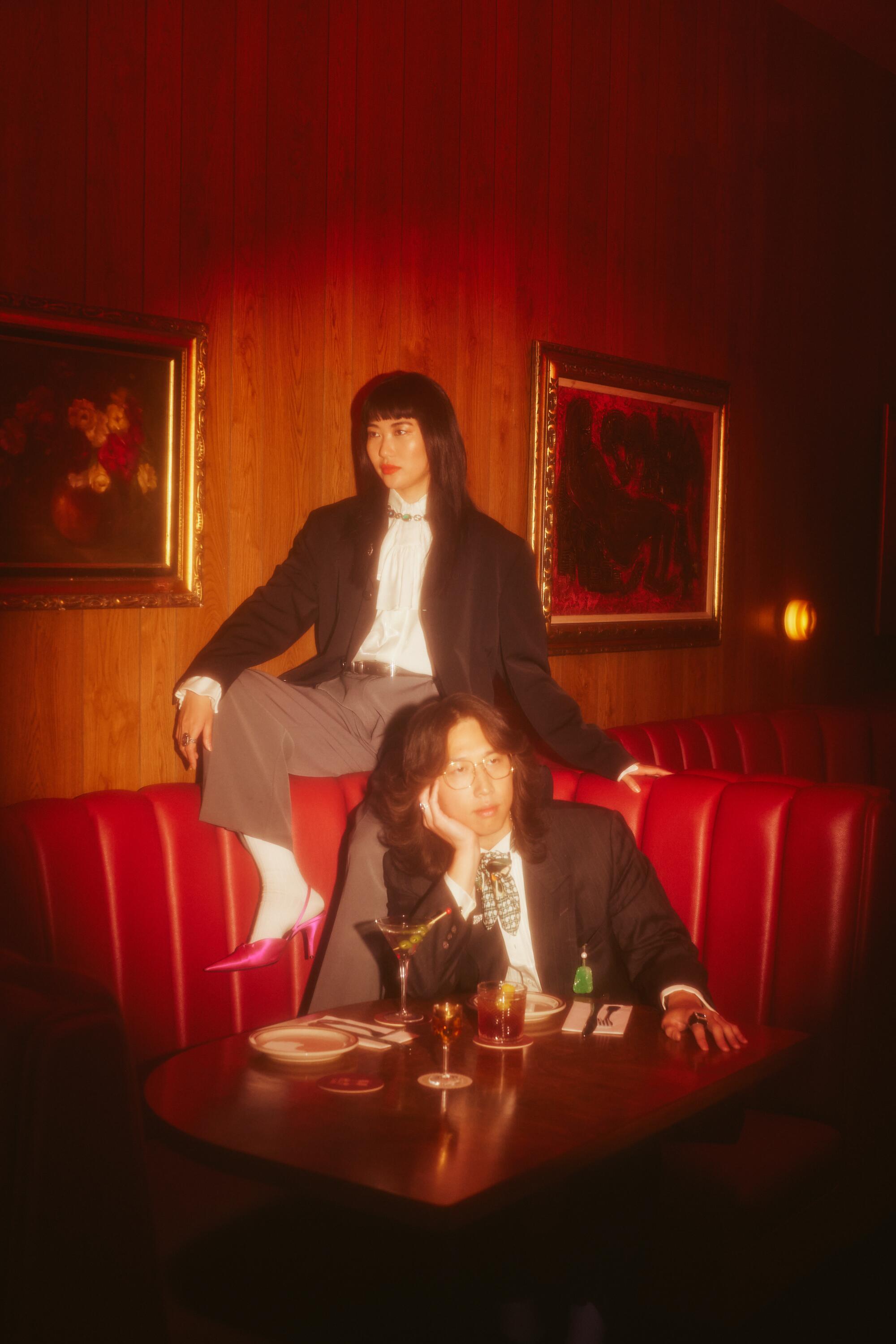
This story is part of Image Issue 15, “Diaspora,” a fantastic voyage through the mecca of food, from Hollywood haunts to mall food courts to L.A. staples. Read the whole issue here.
Going out for dinner used to be a sacred ritual in Los Angeles. A culinary Catholic mass of waiters in bright red tuxedos shuttling you to sumptuous leather booths for your Caesar or McCarthy salad prepared tableside. Dinner and a show, but you were the star. This was unsustainable. I was just the right age to be seduced by Jon Favreau and Vince Vaughn gliding through the Dresden or Formosa Cafe in the movie “Swingers” back in 1996. That film depicted a version of L.A. that was already starting to wither away: dressing up, cruising down the boulevard, having a few stiff drinks at dinner and doing it all over again the next night. The characters in that film didn’t experience the world they were aping, which is probably why they adored it so much.
As the onslaught of drive-thrus, buffets, fast-casual joints and delivery apps turned dining from a communal experience into a nip at the trough, many of L.A.’s grand cathedrals of fine dining started disappearing. Chasen’s, the Brown Derby and Ciro’s all closed toward the tail end of the 20th century. But restaurant-goers in Los Angeles are increasingly seeking out the pomp and circumstance offered by some of the remaining exemplars of the time-honored tradition of the boozy, all-night, drama-filled evening on the town.
The popularity of these establishments has come roaring back in the last few years, with younger patrons seeing the appeal of aesthetics that represent the opulent days before austerity politics, climate-change awareness, drunk-driving laws and other things that require us to behave ourselves. Now, mind you, I am not advocating for grown adults driving through the streets of L.A. rip-roaring drunk or carving down old trees to build a bar. These changes were necessary, but that kind of thing never stops people from feeling nostalgic for eras they themselves did not live through. These places looked gorgeous and made you feel special in a way that a modern restaurant, no matter how chic or exclusive, can never replicate in full.
Instead, it’s more likely that a restaurant or bar will be like Eagle Rock’s Capri Club and do its best to recapture the spirit of the old classics. It sits on the site of what once was a modest Italian joint famous only for being featured on “Gordon Ramsay’s Kitchen Nightmares.” Capri Club is small on the inside; serves a small but impactful menu; and, crucially, doesn’t take reservations. What it does do so amazingly well is offer the magic ingredient of the past. Every night there feels like an adventure, populated with people you know, people you want to know and people you’re about to meet.
DM for addy and unlock a world of dining that edges into the sublime.
Capri has cultivated an energy and a theatricality that can be addicting. Still, unlike its forebears, it’s unfussy and the reservation prohibition keeps it from being unfriendly. It’s like stepping into a particularly lively living room rather than what the great old restaurants could do, which is make you feel like you were stepping onto the set of a movie.
🍸🍸🍸
The first time I went back to Musso & Frank Grill after the start of the pandemic, I was dressed terribly: a cream-colored Dries Van Noten tuxedo jacket and black Tom Ford trousers I rescued from TheRealReal and … *gasp* a T-shirt. Untucked. And I had the audacity to take a photo of this high-low, highfalutin mess. That I allowed any recorded evidence of this affront to common sense immediately calls my judgment into question. I had seen Quentin Tarantino’s “Once Upon a Time ... in Hollywood,” hadn’t I? I knew better.
I’m still mortified by it all, but I have an excuse. After being inside for more than a year and having no occasion to adhere to good taste, a lot of us (even me) lost track of what constitutes “good taste” in the first place. My bizarre, untucked outfit was a physical manifestation of my need to reclaim the simple pleasures of dressing up but my unwillingness to play by the old rules. What I realized eventually is that I might actually want some rules. The come-as-you-are vibes that permeated my initial post-quarantine period have given way to a craving for some semblance of order. More important, it’s made me want to see every evening out as a story waiting to be told.
What I wear to these restaurants — Musso’s, Dan Tana’s, Los Feliz icon the Dresden, Dear John’s in Culver City and numerous others — actually isn’t important. Certainly, you can’t show up to Musso’s in, say, a tank top, but other than that, the excellent wait staff isn’t going to critique your outfit. It’s nearly impossible to look better than the waiters and bartenders anyway. The single-breasted red dinner jacket — with bow ties for waiters and regular ties for bar staff — has become an indelible part of the Musso’s experience since it was introduced in the middle of the 20th century.
Don’t even try to outdo that look. One time, I went on a date with a very famous woman whose name I wouldn’t dare to print here and I made the mistake of trying to outdress the staff. Needless to say, we did not go out again. Really, the old Hollywood restaurant experience is about how you dress only if that’s the experience you want to have. It’s everything else around you that really matters. Like the martini.
Rarely can a drink be considered a fashion accessory, but the classic martini glass is just that when held in the right situation. I can’t imagine going to a place like the Smoke House in Burbank and not ordering the martini with dinner. First of all, the food is sometimes not the reason to go to a place. That’s certainly the case with the Smoke House, which opened in 1946, and retains such inscrutable throwback items as “Steak Sinatra” — beef sautéed in red wine with bell peppers, shallots, garlic, mushrooms, tomatoes and a mound of linguini. I ordered it the night of my first visit and valiantly ate the whole thing, despite the generally brown nature of the entire dish. But anything can be washed down with a simple gin martini, made dry with a twist.
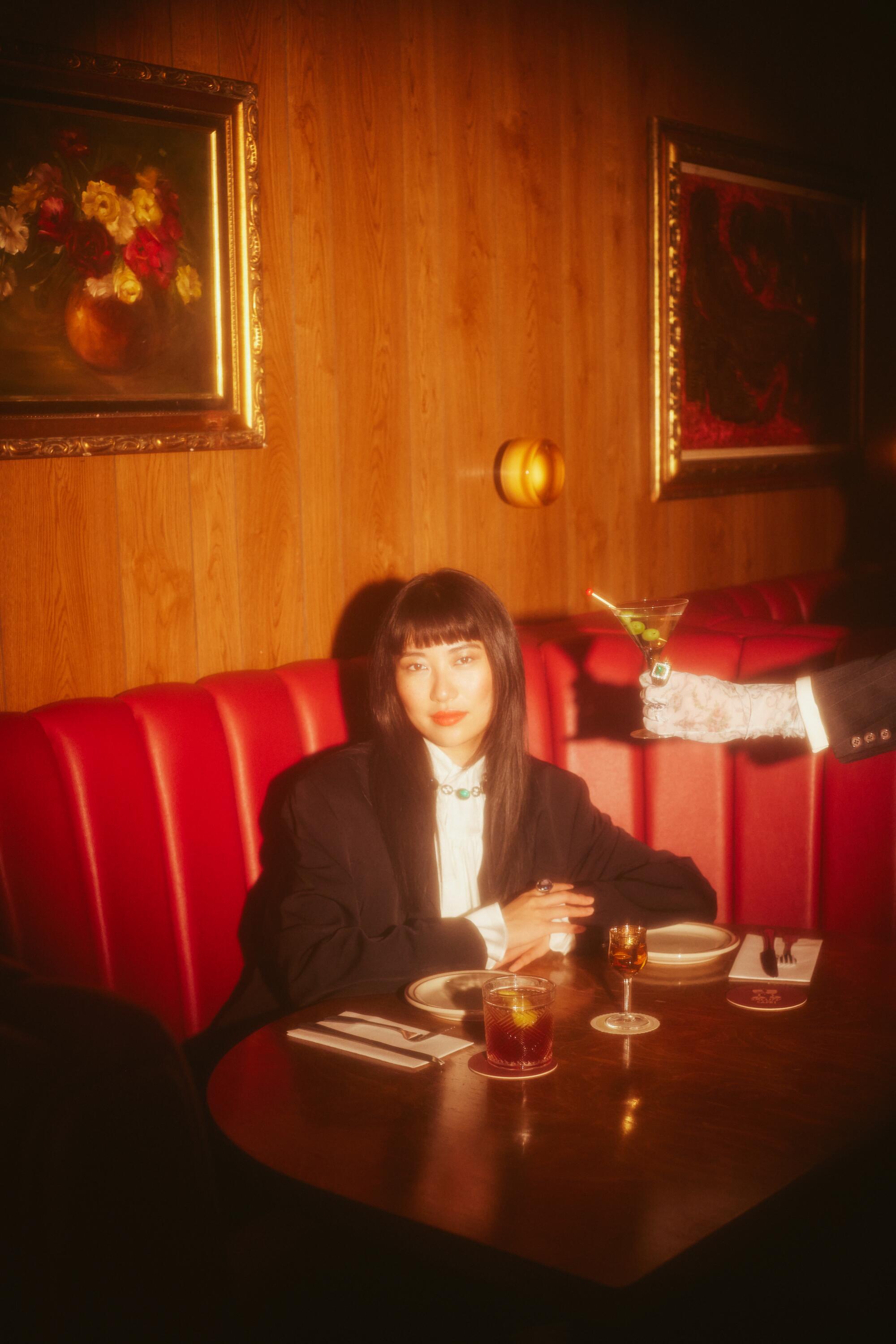
The martini is the ideal social lubricant because it only takes one (OK, let’s be honest, two) to allow you to glide through a room with something resembling poise. I use it as a pointer, a prop, a shield and sometimes even a drink. One of the best martinis in town can be had at the Sunset Tower Hotel, which has been refurbished in the last few decades but maintains its classic charm, to the point where the menus still ask you not to take photos, even if no one has ever stopped me from doing it. At Capri Club, I have earned the nickname “Martini Dave” for my strict adherence to my regular order: gin martini, shaken, dry, with a twist. If you can earn yourself a nickname at a bar or restaurant, you’re either an incredibly fun person or you need to consider spending some more time at home. I’d prefer to think I fall within the former category. Whatever the reason, that level of familiarity and community is the throughline from the classic restaurants of the past to the dining scene of today.
All of these restaurants have adapted to modern times as well as they can. Menus are freshened up when possible. They all have Instagram accounts to entice you to visit. Some even sell merchandise with their logos on them. But they all know that what we really want is to be transported, to be moved and to be thrilled. The greatest moment of any meal at Musso & Frank happens before the meal is even ordered. It’s that first moment when you walk down the stairs from the parking lot valet stand, past the kitchen, the out-of-service pay phones and the bathrooms. When you are completely enveloped in a vision of the world as it once was; a vision devoid of the pain and the strife that existed then. It’s the world as it once was and will never be again. Where cigarette stains on a mural are a window to history. And we should feel lucky they still exist.
Photography: Lenne Chai
Models: Xinyue Yan, Jon Yuan
Styling: Jon Yuan
Makeup: Anna Kato
Hair: Thomas Silverman
First Assistant: Nalani Hernandez-Melo
Second Assistant: Violet Dely
Location: Capri Club
More stories from Image
